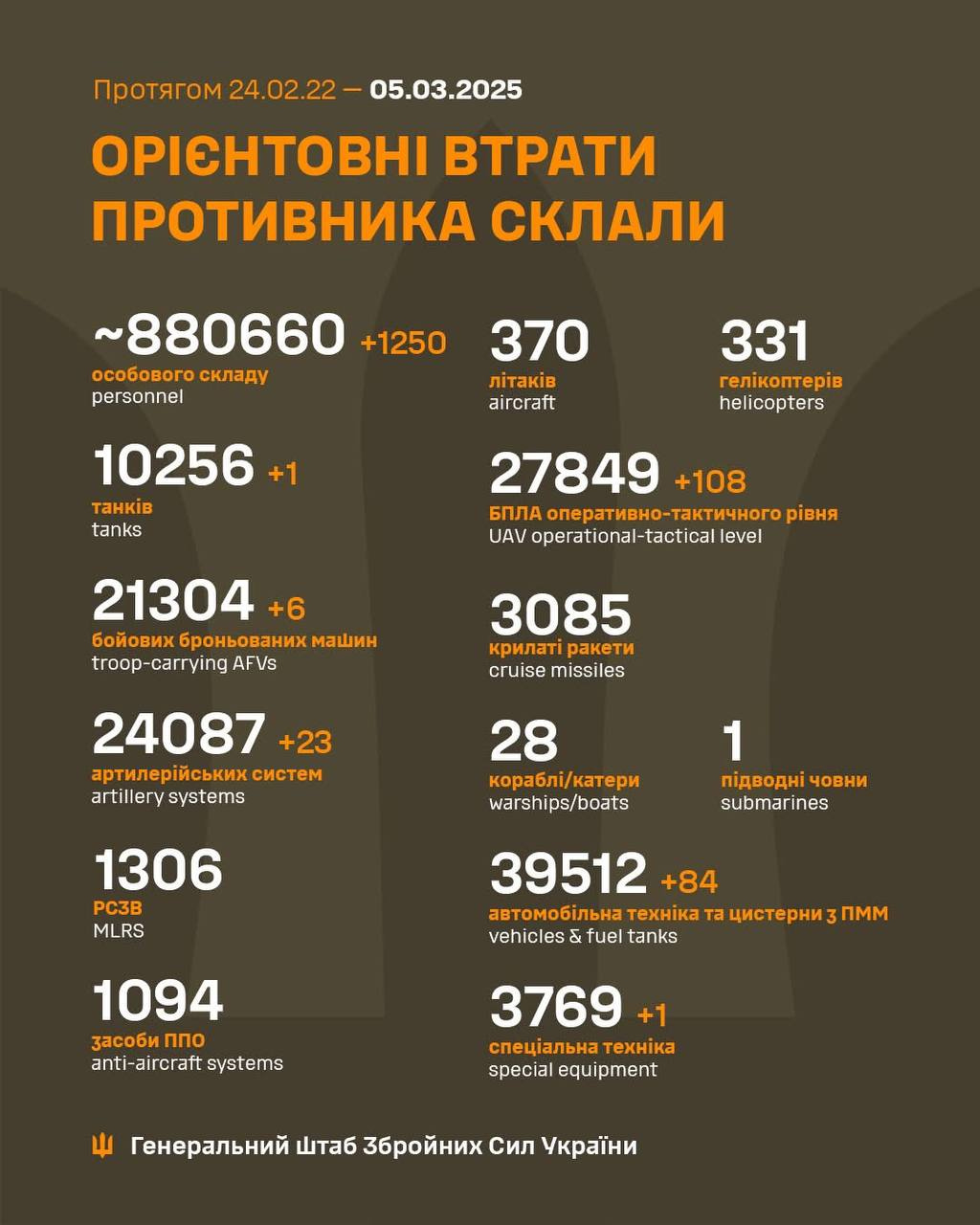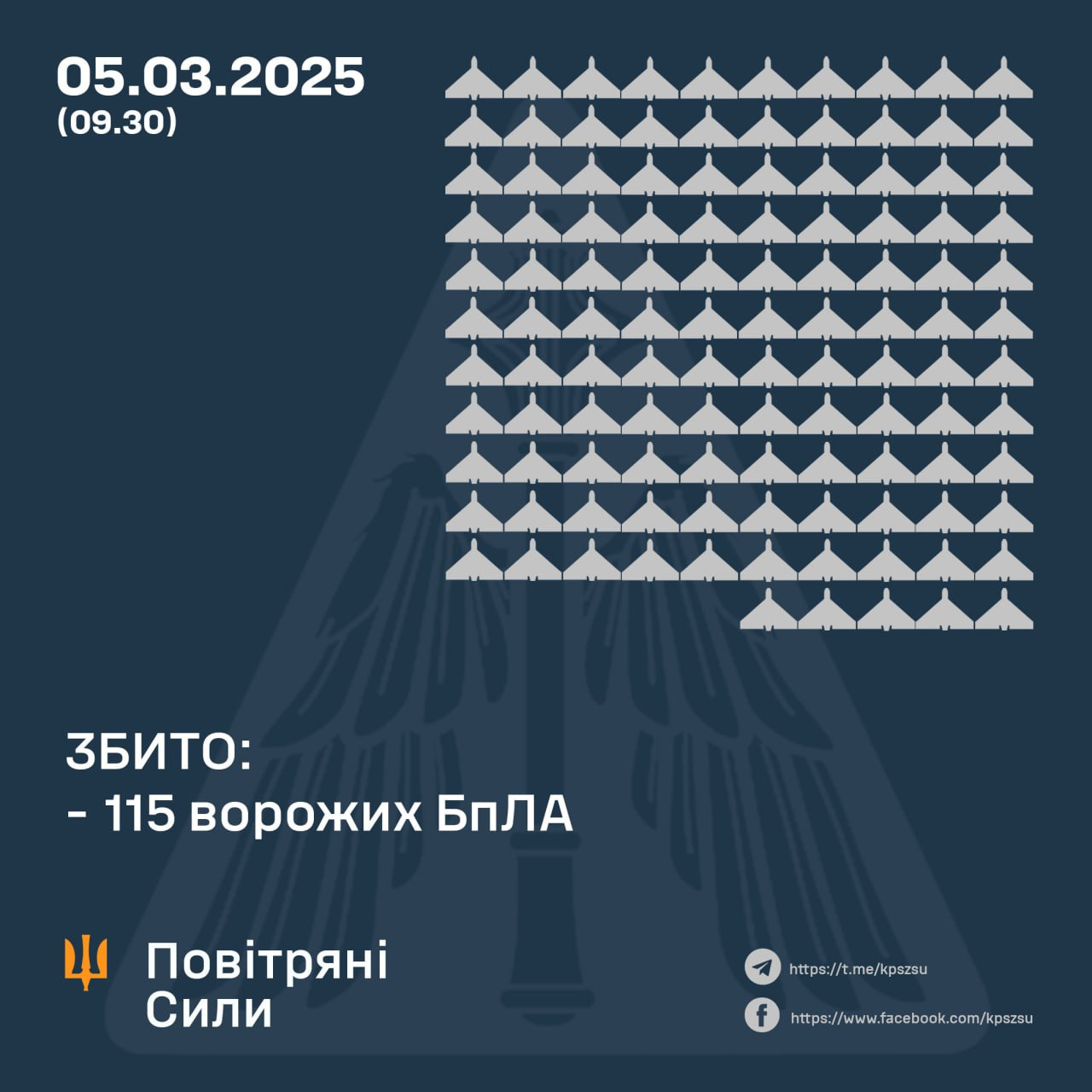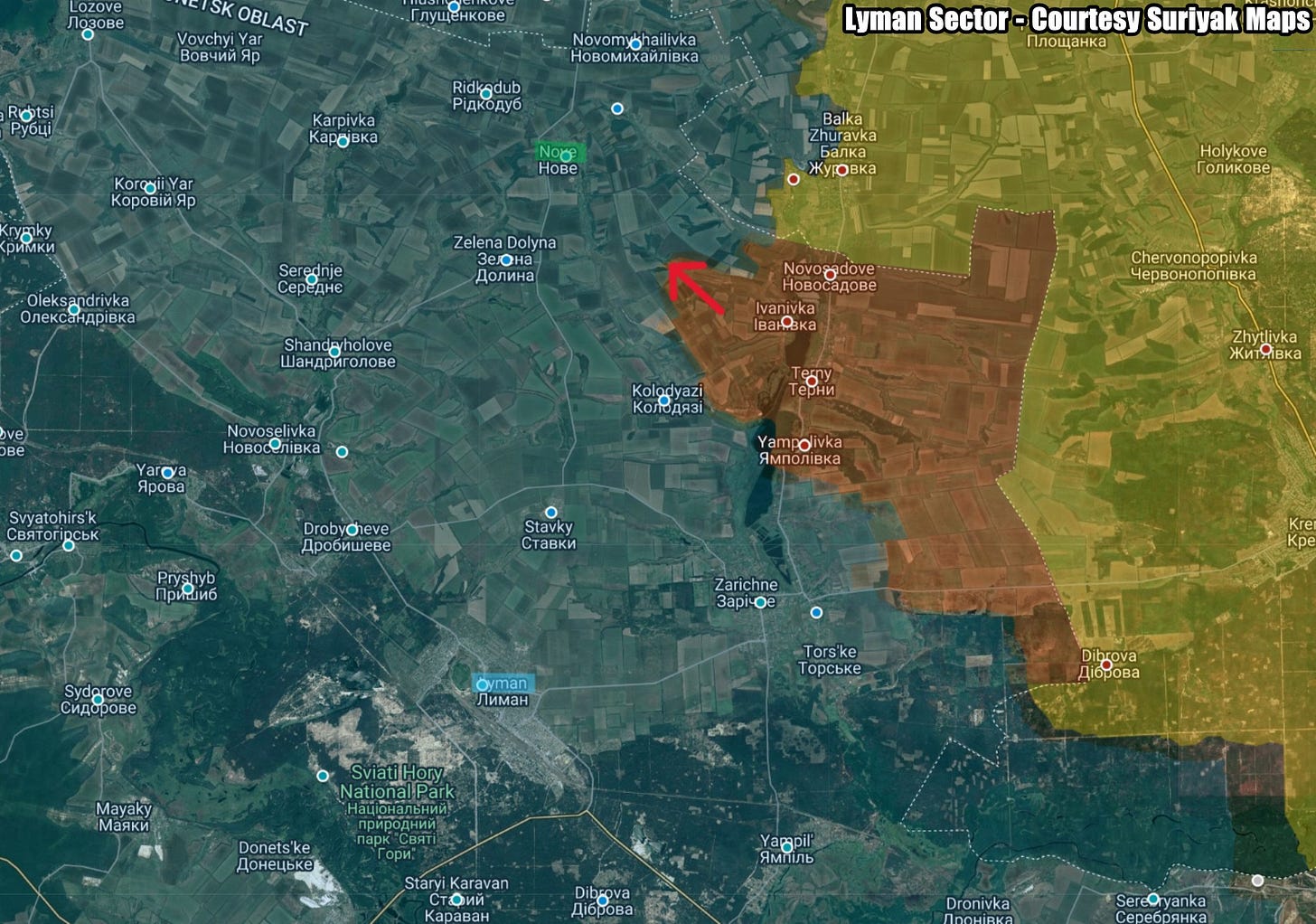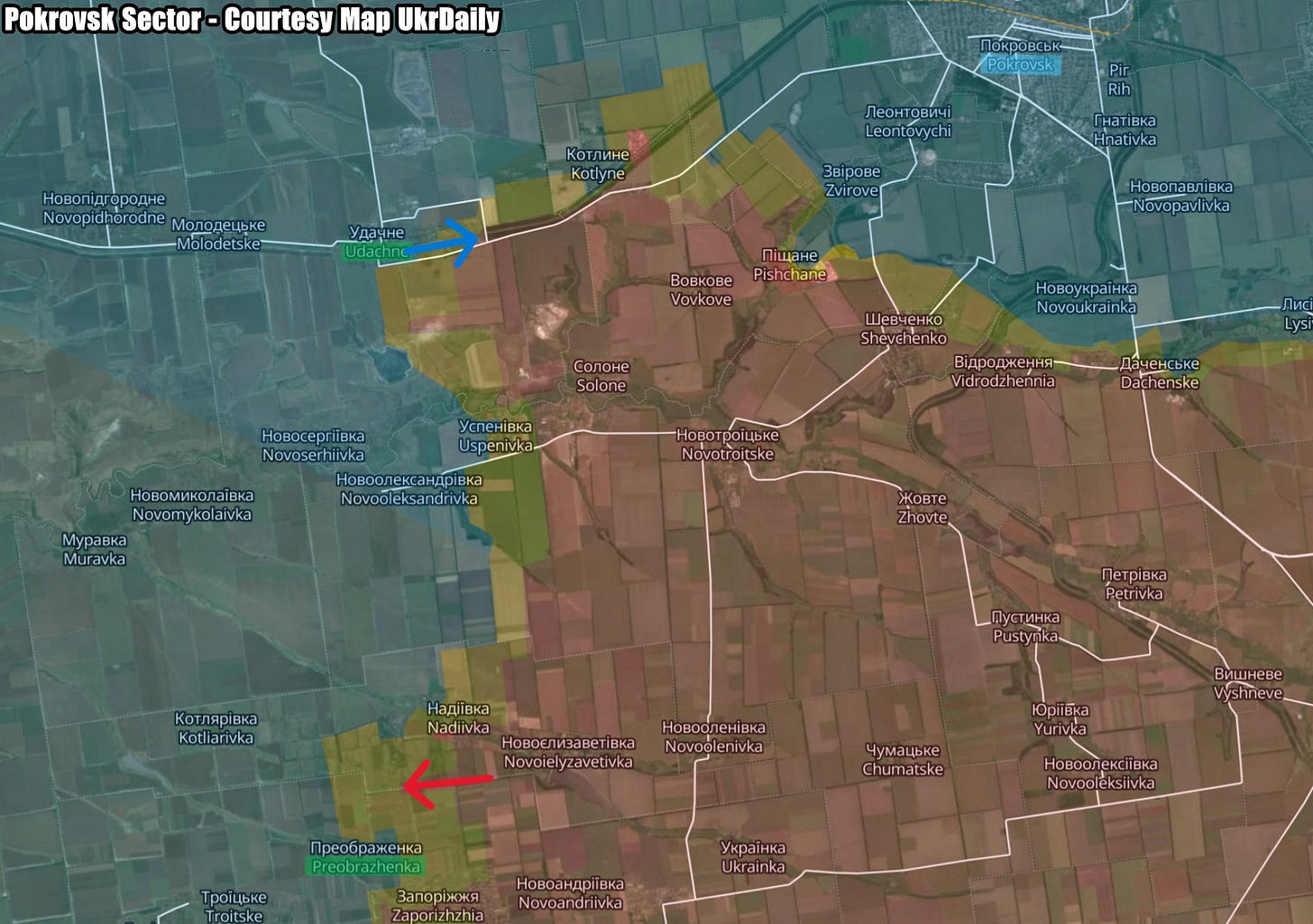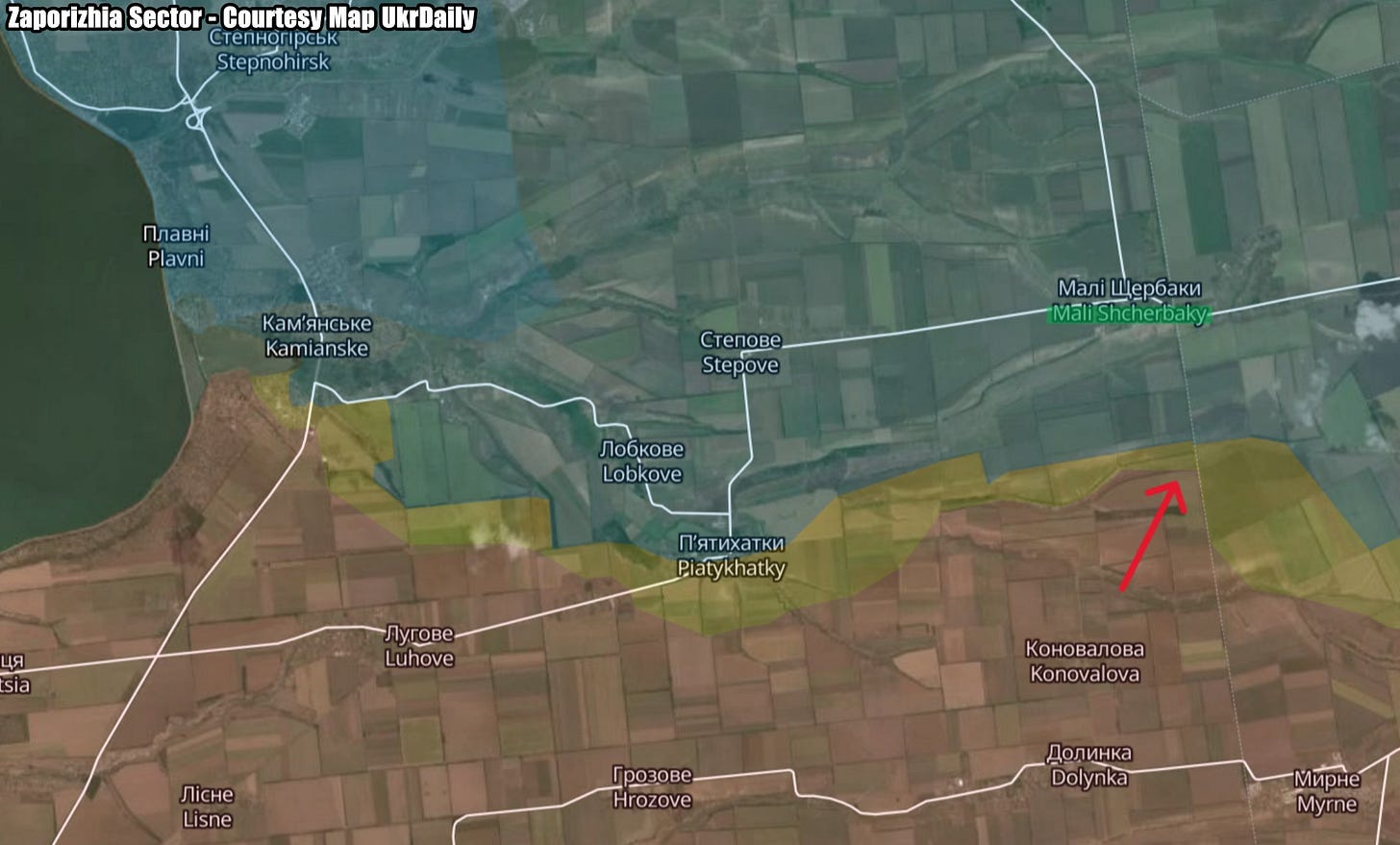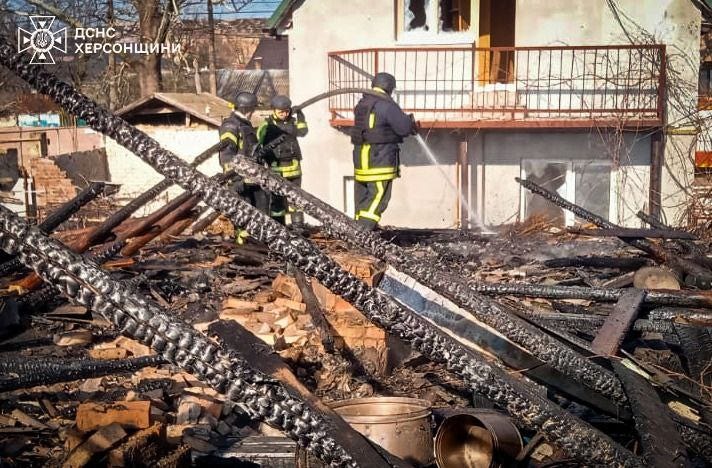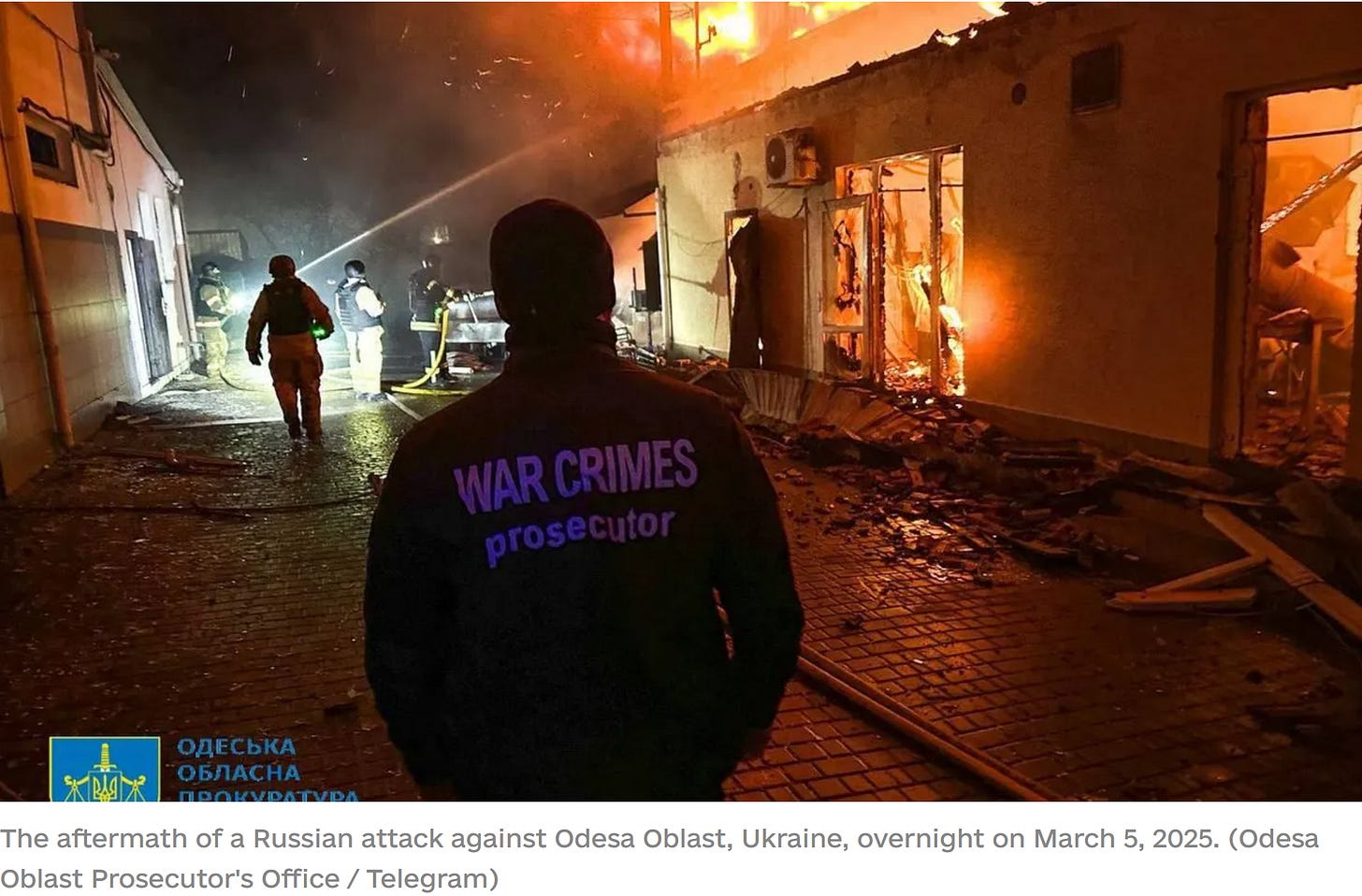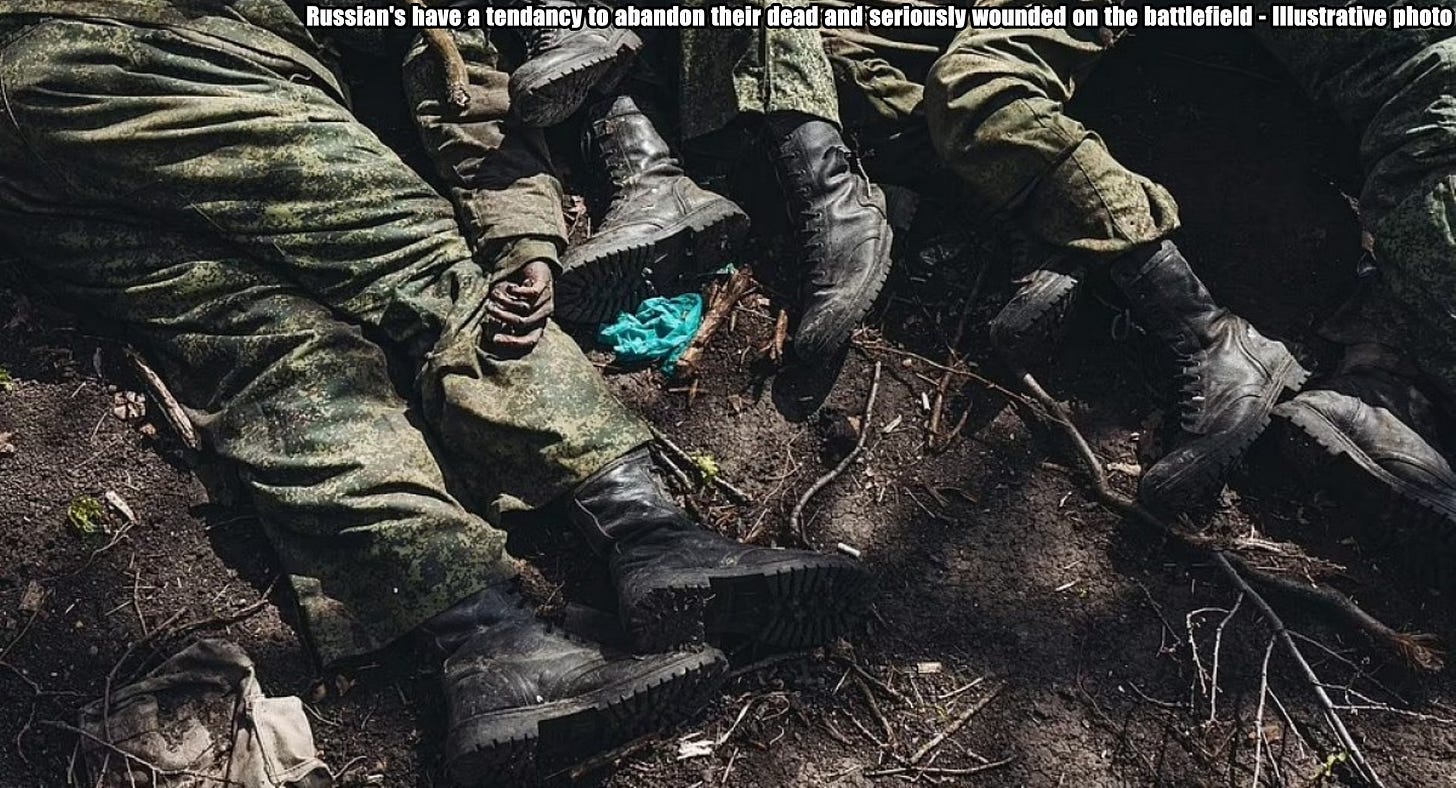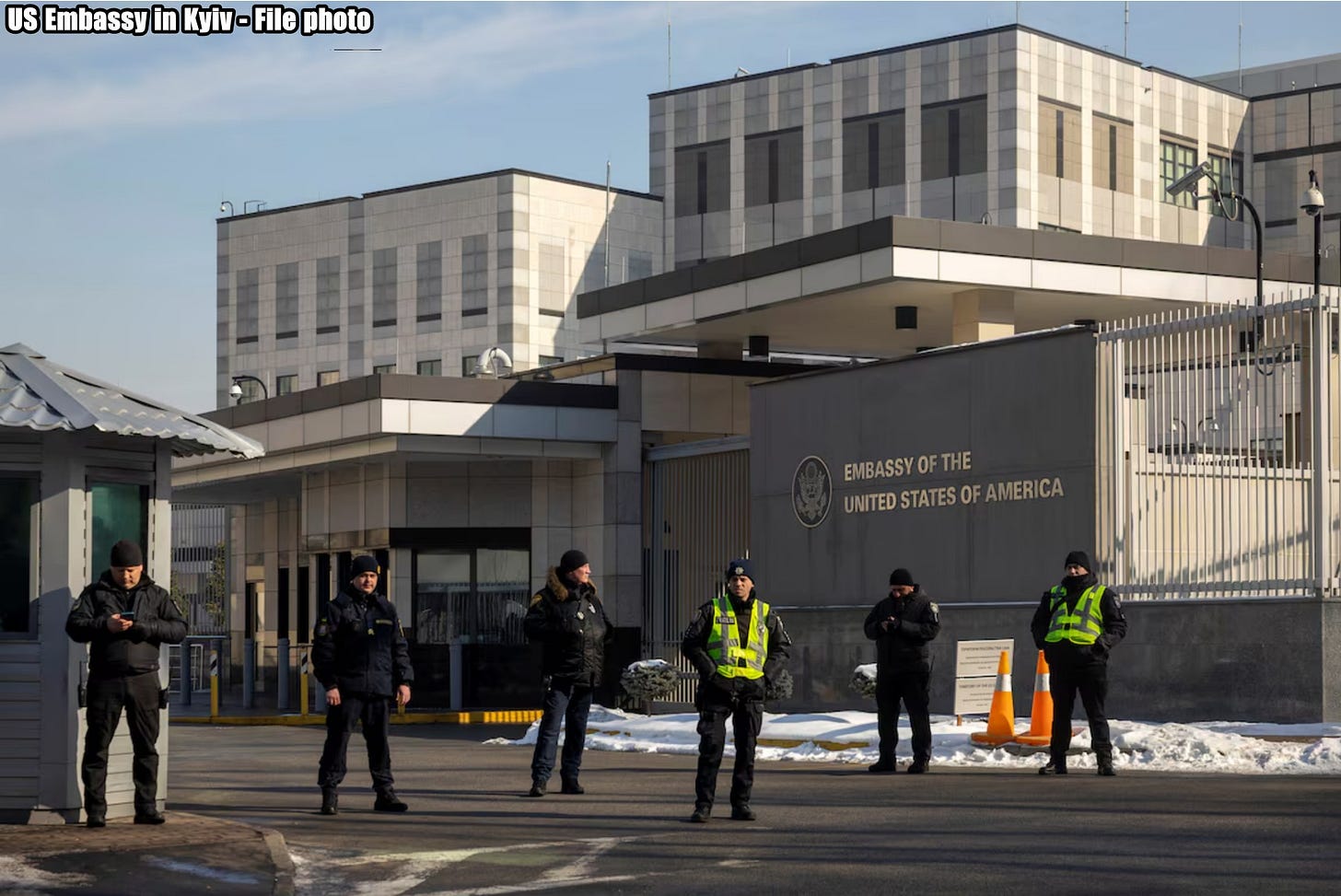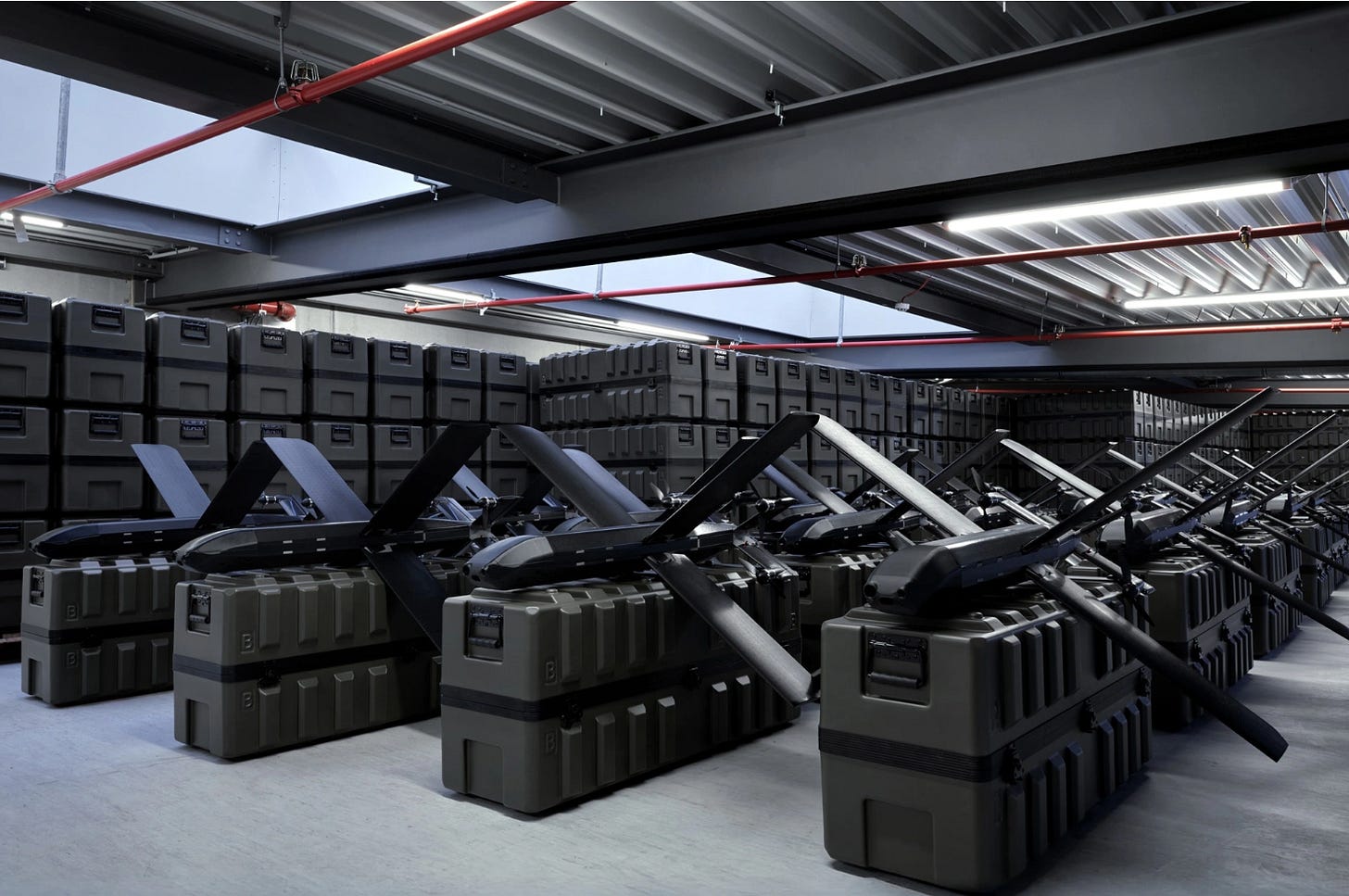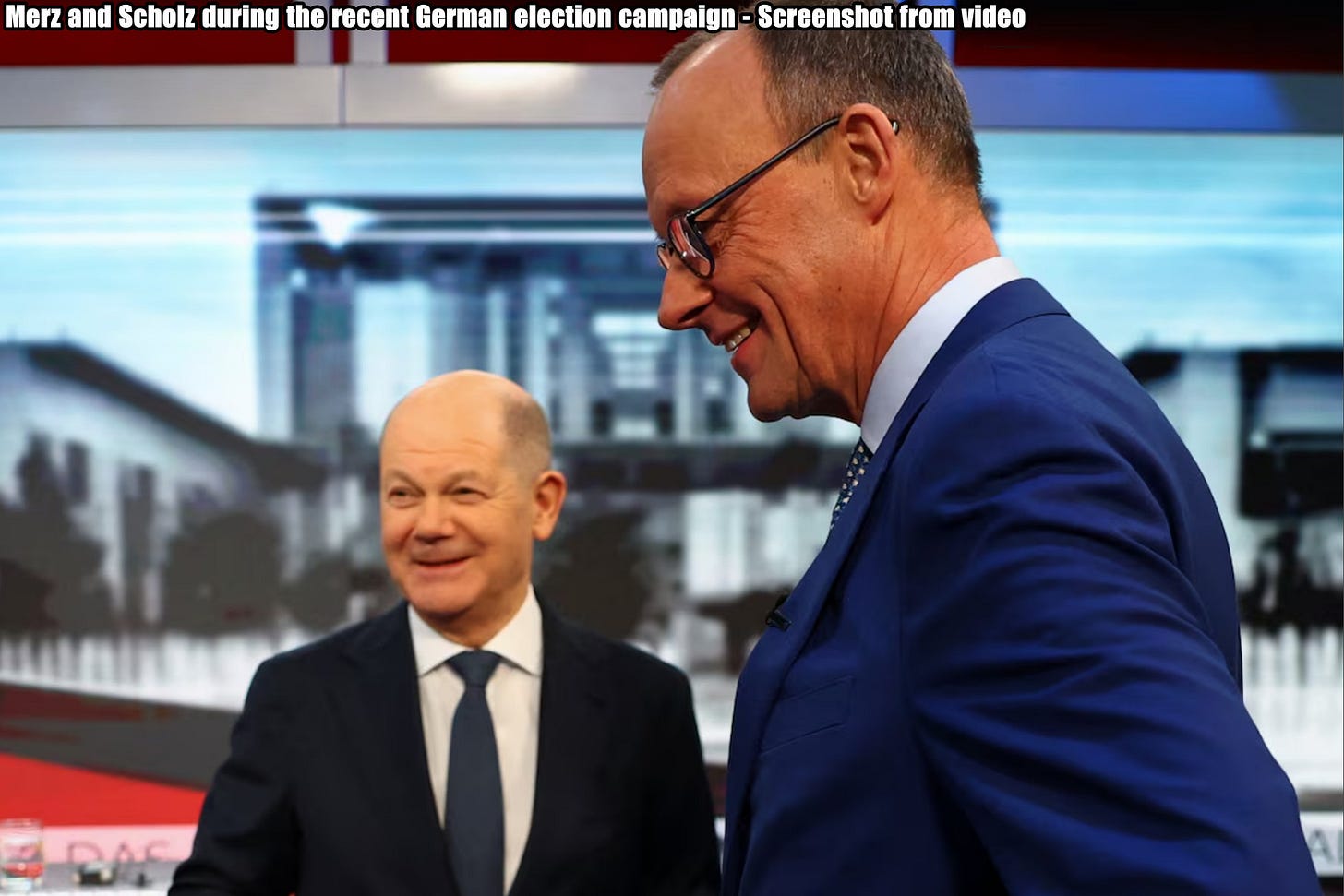Slava Ukraini! In early 2022 I began a Telegram channel aggregating news from a number of sources daily on the war in Ukraine. In June 2023 I began providing a daily draft for the Ukraine War Brief Podcast collecting news from over 70 sources daily, which formed the basis of the script. While the Podcast no longer exists I have continued to make this Brief available for my followers here on Substack for those who wish to keep up with the news from the war.
All the latest news on the Russo-Ukraine War 6 days per week
ALONG THE CONTACT LINE
GSAFU Morning Report
The General Staff of the Armed Forces of Ukraine in its Operational Information update at 08:00 on Mar 5 stated that day 1106 of the full-scale invasion of the Russian Federation against Ukraine had begun.
The situation on the line of combat remains tense in some sectors. Ukrainian defenders continue to actively counteract the Russian aggressor, causing them significant losses in personnel, equipment and technology. Exhausting the enemy along the entire front line and continuing to disrupt the plans of Russian occupiers to advance deeper into the territory of Ukraine.
During the past day,108 combat engagements took place.
Over the past 24 hours, the enemy carried out 2 missile strikes, 56 air strikes, used 2,234 drones and fired approximately 4,800 artillery shells across the positions of Ukrainian forces and civilians.
Air Force Daily Report
115 ENEMY UAVS SHOT DOWN, 55 DRONES FAILED TO REACH THEIR TARGETS (LOCATIONALLY LOST)
➖➖➖➖➖➖➖➖➖
On the night of March 5, 2025 (from 19:30 on March 4), the enemy attacked with three Iskander-M/KN-23 ballistic missiles from the Voronezh region, one S-300 anti-aircraft guided missile from the Kursk region, and the 181st Shahed attack UAV and simulator drones of various types from the directions: Orel, Kursk, Millerovo, Bryansk, Primorsko-Akhtarsk - Russia, Chauda - Crimea.
The air attack was repelled by aviation, anti-aircraft missile troops, electronic warfare units, and mobile fire groups of the Air Force and Defense Forces of Ukraine.
As of 09:30, it has been confirmed that 115 Shahed attack UAVs and drones of other types have been shot down in Kharkiv, Poltava, Sumy, Chernihiv, Cherkasy, Kyiv, Dnipropetrovsk, Donetsk, Mykolaiv, and Odessa regions.
55 enemy drone simulators were lost in location (without negative consequences).
As a result of the enemy attack, the Kyiv, Odesa, Dnipropetrovsk, and Kharkiv regions suffered.
Combat Operations in the Kursk Sector, Russian Federation
The Institute for the Study of War (ISW), a US based think tank, in its Mar 4 Russian Offensive Campaign Assessment reported that Russian forces continued offensive operations in Kursk Oblast on Mar 4 but did not make any confirmed advances.
Russian forces conducted offensive operations northwest of Sudzha near Malaya Loknya and Lebedevka; north of Sudzha near Cherkasskoye Porechnoye; southeast of Sudzha near Cherkasskaya Konopelka; and south of Sudzha near Guyevo. Russian milbloggers claimed that Ukrainian forces counterattacked near Malaya Loknya and Kurilovka (north of Sudzha).
The Khortytsia operational-strategic group
(Responsible for the northeastern part of Ukraine. )
Lyman Sector: Russian forces recently advanced in the Lyman direction.
Geolocated footage published on March 4 indicates that Russian forces recently advanced southeast of Nove (northeast of Lyman).
The Tavria operational-strategic group
(Responsible for the central-eastern and southeastern part of Ukraine.)
Pokrovsk Sector : Ukrainian and Russian forces recently advanced in the Pokrovsk direction.
Geolocated footage published on Mar 3 indicates that Ukrainian forces recently advanced along the Donetska Railroad in southeastern Udachne (southwest of Pokrovsk).
The Ukrainian General Staff published a map on Mar 4 indicating that Russian forces advanced east of Preobrazhenka (southwest of Pokrovsk).
The Ukrainian General Staff reported that Ukrainian forces struck a control point of the Russian 98th VDV Division in occupied Manzhykiv Kut (southeast of Donetsk City in the Russian rear) on March 3.[81] The Ukrainian General Staff reported that this strike disrupted elements of the 98th VDV Division's command-and-control.
Zaporizhia Sector: Russian forces recently advanced in western Zaporizhia Oblast.
The Ukrainian General Staff published a map on March 4 indicating that Russian forces recently advanced in the fields south of Mali Shcherbaky (northwest of Robotyne).
The Odesa operational-strategic group
(Responsible for Kherson, Qırım, (also known as Crimea) and the Black Sea.)
There have been no major changes to the combat environment since our last report.
TEMPORARILY OCCUPIED TERRITORIES
Nothing major to report.
THE HOME FRONT
Russian attacks across Ukraine kill 2, injure 7 over past day
Russian attacks against Ukraine killed at least two civilians and injured at least seven others over the past day, the Kyiv Independent reported citing regional authorities on March 5.
In Kherson Oblast, Russia targeted 29 settlements, including the regional center of Kherson, over the past day. As a result of the attacks, one person was killed and six others were injured, Governor Oleksandr Prokudin reported.
Russian forces attacked Odesa Oblast and its regional center of Odesa with drones and ballistic missiles, according to Governor Oleh Kiper.
During the attack, Russia targeted critical infrastructure in Odesa, causing power, water, and heat supply outages in the city. A Russian strike against the village of Lymanka on Odesa's outskirts killed a 77-year-old man, according to the statement.
Russian aerial strikes also targeted an energy facility of Ukraine's largest private energy company, DTEK, in Odesa Oblast overnight, the company announced. This was the fourth Russian attack in two weeks on the oblast's power grid.
In Donetsk Oblast, a Russian strike injured a civilian in the town of Pokrovsk, Governor Vadym Filashkin reported.
In Kharkiv Oblast, Russian forces attacked the village of Kozacha Lopan with a glide bomb, injuring a 41-year-old man, according to Governor Oleh Syniehubov.
RUSSIAN WORLD
Russia’s horrific casualty rate must be laid at the feet of Putin.
The Institute for the Study of War (ISW), a US based think tank, in its Mar 4 Russian Offensive Campaign Assessment reported that the high casualties in Russia's war in Ukraine are the direct result of Putin's determination to conquer all of Ukraine using horrific and costly tactics, and Putin can dramatically reduce this killing any time he chooses. Russian forces have been conducting highly attritional, infantry-led assaults along the frontline that result in high losses but only return disproportionately limited territorial gains.
Grumpy here - It should be noted that as of today Mar 4 2025 the Ukrainian GSAFU estimates that Russia has suffered 880,660 casualties. At current casualty rates it is estimated that Russia will have suffered 900,000 by the end of Mar. Additionally, at the current rate they will surpass the milestone of 1 million casualties sometime in Jun.
Putin claimed in Jun 2024 that Russia is unable to secure a rapid victory in the war and so Russian forces are instead pursuing a more gradual victory. Putin claimed at the time that Russian forces are trying to "squeeze" Ukrainian forces out "of those territories that should be under Russian control." Putin is committed to gradual, creeping gains at the expense of high losses and likely believes that these limited gains can set conditions over time for Russia to demand more Ukrainian territory during future peace negotiations or allow him to conquer Ukraine entirely. Putin's desire to continue this deadly approach is driving the high loss rates on the battlefield. Russia is also conducting nightly drone and missile strikes against rear Ukranian areas that are killing civilians and destroying and damaging Ukrainian civilian and energy infrastructure – further increasing the death toll in the war in Ukraine.
Russia's oil, gas budget revenue in February drops by 18% year-on-year.
Russia's budget revenue from oil and gas trade in February decreased by 18% year-on-year and by 2.3% compared to January, The Kyiv Independent reported on March 5, citing Reuters with respect to Russian Finance Ministry data.
Oil and gas revenues last month amounted to 771.3 billion rubles ($8.6 billion), a significant drop from 945.6 billion rubles ($10.5 billion) in February 2024 and a moderate decrease in comparison to 789.1 billion rubles ($8.8 billion) in January 2025.
The news underscores Russia's economic woes amid its full-scale war against Ukraine and the heavy Western sanctions imposed since 2022.
Oil and gas exports, which have traditionally represented a significant portion of Russia's federal budget revenue and play a key role in sustaining its war economy, have been particularly targeted by Western economic restrictions.
The previous U.S. Biden administration rolled out several waves of sanctions against Russia's oil and gas industry and its "shadow fleet" of tankers, most recently in January. The EU, which has traditionally been the primary buyer of Russian fossil fuels, sought to pivot away from Russian supplies while Ukraine has launched a campaign of long-range drone strikes against Russia's energy facilities.
In spite of this, fossil fuel exports continue to be crucial in feeding Russia's war chest, representing about 30% of the country's federal revenue last year. Moscow has managed to redirect much of its sales to other major markets, such as China and India.
A February study also showed that while EU countries spent about $20.3 billion in military support for Ukraine in 2024, they bought Russian fossil fuels worth about $23.5 billion in the same period.
The future of sanctions against Russia also remains uncertain as the new Trump administration, which has adopted a more amicable stance toward Moscow, floated the idea of sanctions relief as part of peace efforts.
RELATED INTERNATIONAL NEWS
US cuts off intelligence-sharing with Ukraine.
The U.S. has cut off intelligence-sharing with Kyiv, said CIA Director John Ratcliffe on Wednesday, in a move that could seriously hamper the Ukrainian military's ability to target Russian forces. Reuters reports.
The decision to cut off intelligence-sharing and military aid to Ukraine starkly illustrates the Trump administration's willingness to play hardball with an ally to force it to the negotiating table.
U.S. President Donald Trump said on Tuesday he received a letter from Ukrainian President Volodymyr Zelenskiy in which the Ukrainian leader expressed willingness to come to the negotiating table over the Russia-Ukraine war.
"I think on the military front and the intelligence front, the pause (that prompted Ukraine's president to respond) I think will go away," Ratcliffe told Fox Business Network.
"I think we'll work shoulder to shoulder with Ukraine as we have to push back on the aggression that's there, but to put the world in a better place for these peace negotiations to move forward," he said.
Three sources familiar with the situation also confirmed that U.S. intelligence-sharing had stopped. It was not immediately clear to what extent the U.S. had cut back on the sharing.
One of the sources said that intelligence-sharing had only "partially" been cut, but was unable to provide more detail.
Since the start of the war in 2022, the U.S. has provided Ukraine with significant intelligence, including critical information its military needs for targeting purposes.
U.S. National Security Adviser Mike Waltz told reporters Wednesday morning that the U.S. "had taken a step back" and that the administration was "reviewing all aspects" of its intelligence relationship with Ukraine.
Waltz also said that the U.S. was actively engaged in talks with Ukraine about moving negotiations forward on a minerals deal and a potential peace deal with Russia.
"I think we're going to see movement in very short order," he said.
NATO armies unprepared for modern war, Ukraine commander warns.
NATO armed forces are not ready for a modern drone war, Reuters reports citing the military commander in charge of Ukraine's unmanned systems, three years into a conflict with Russia in which both sides are pushing for a technological edge.
Kyiv is striving to stay ahead of the enemy, employing artificial intelligence, deploying more ground drones and testing lasers to bring down Russian unmanned aerial vehicles, said Colonel Vadym Sukharevskyi, head of Ukraine's Unmanned Systems Forces.
Speaking in a newly outfitted office for the recently founded Unmanned Systems Forces, the location of which Reuters was asked not to disclose, Sukharevskyi laid out the leaps and bounds in which drone warfare had advanced since the start of the invasion in 2022, and the ways in which it upended the established doctrines of war.
"From what I see and hear, not a single NATO army is ready to resist the cascade of drones," Sukharevskyi told Reuters in a recent interview.
He said NATO should recognise the economic advantage of drones, which often cost far less to build than the conventional weaponry required to down them.
"It's just elementary mathematics. How much does a missile that shoots down a (Russian) Shahed (drone) cost? And how much does it cost to deploy a ship, a plane and an air defence system to fire at it?"
Long-range drones can cost as little as several thousand dollars for the most basic decoy models, although the Shahed strike drones have been estimated to cost in the tens of thousands. Air defence interceptor missiles usually have a six or seven figure U.S.-dollar price tag and many countries only keep limited stocks, thus making their use highly uneconomical.
Sukharevskyi's comments come as some NATO members in Europe ramp up defence spending to prepare for war should the Ukraine conflict drag on or escalate. With U.S. support for Ukraine and Europe wavering, those efforts have intensified.
Since Russia invaded Ukraine in 2022, there has been a vast expansion in drone use.
Ukraine says it made 2.2 million small First Person View (FPV) drones and 100,000 larger, long-range ones in 2024. Russia previously gave estimates that it would make 1.4 million FPV drones in the same year.
"Right now, even the commander-in-chief of the Armed Forces of Ukraine says that more than 60% of targets are destroyed by drones," Sukharevskyi said.
"The only question is how the tactics of their use will develop, and, following on from that, the technological aspect."
German parties agree on historic debt overhaul to revamp military and economy.
Preliminary talks between Germany's CDU and SPD have yielded an early result, with the parties agreeing on a special fund to boost defense spending, freed from the "debt brake." DW reported on Mar 4.
Germany's likely next chancellor, Friedrich Merz has announced plans to raise hundreds of billions of euros to boost defense and infrastructure amid fears that the United States is losing interest in Europe and the NATO alliance.
The announcement came amid exploratory talks between Merz's Christian Democrats (CDU), along with its Bavarian sister party the Christian Social Union (CSU), and the Social Democrats (SPD).
Merz made the announcement alongside the CSU's Markus Söder and the SPD co-leaders Lars Klingbeil and Saskia Esken.
It comes just over a week after the CDU won Germany's federal election. Merz has said he aims to form a government coalition with the SPD.
The leaders said they had agreed to table a motion in parliament to alter the German constitution in order to ease controls on defense expenditure which surpasses 1% of Germany's GDP from debt brake limits.
Based on German GDP in 2024, that would include all expenditure above approximately €45 billion ($43 billion).
Furthermore, the country's 16 individual federal states are also to be permitted to take out loans up to the equivalent of 0.35% of their economic output in order to further boost performance.
"We are aware of the scale of the tasks ahead of us, and we want to take the first necessary steps and decisions," Merz said, adding: "Given the threat to our freedom and to peace on our continent, the mantra for our defense has to be: whatever it takes."
His CSU colleague Söder added: "We are sending a signal to friends and foes: Germany is here. Germany will not retreat."
Merz said that such increases in defense spending can only be stemmed if Germany's economy "gets back on a path of stable growth" as quickly as possible.
"That requires not only an improvement in competitive conditions but also quick and sustainable investment in our infrastructure," he said.
Since such investments "cannot be financed solely by the federal budget," the parties have also agreed a new €500 billion special fund for industrial and infrastructural investments, which the hope will help stimulate Germany's ailing economy over the coming decade.
"We are finally ending the investment log-jam in our country," said SPD leader Klingbeil, adding that Germany's constitutional debt brake will be revised by the new government by the end of the year "to prevent it from becoming a brake on investment."
Both motions — on defense expenditure and the infrastructure special fund — are to be tabled before the expiry of the current parliament, where the CDU and SPD will hope to rely on the support of the Greens and FDP in order to achieve the two-thirds majority vote required for constitutional change.
The moves from Berlin are intended to demonstrate Germany's ability to act ahead of a European Union summit on Thursday, at which member states will discuss the bloc's response to the apparent change in United States foreign policy under President Donald Trump.
"We are counting on the United States of America standing by our mutual alliance commitments in the future as well," said Merz. "But we also know that the funding for the defense of our country and alliance must now be expanded significantly."
As such, Merz also said that he would be pushing for the immediate approval of a three-billion-euro aid package for Ukraine which has been held up in parliament for weeks.
He told reporters he would meet outgoing Chancellor Olaf Scholz on Wednesday "to speak about the urgent help needed for Ukraine, around €3-3.5 billion, which can be approved now as off-budget expenditure."
The parties are set to continue their exploratory coalition talks as they look to find common ground on the budget, migration, economic competitiveness and security.
Merz said the goal was to "complete the consultations promptly" but warned that it could be a "longer journey."
MILITARY & TECH
Germany upgrades Taurus missiles in $160M deal.
Saab has received a contract worth SEK 1.7 billion ($160 million) for the modernization and maintenance of the TAURUS KEPD 350 cruise missile system. Defence Blog reports.
The agreement, which runs from 2025 to 2035, aims to enhance the operational capability of Germany’s long-range air-launched missiles.
The order was placed by TAURUS Systems, a joint venture between MBDA Germany and Saab, following an initial request from Germany’s defense procurement agency, BAAINBw. It includes extensive system upgrades as well as a decade-long life cycle maintenance plan, ensuring the continued effectiveness of the German Air Force’s missile inventory.
Görgen Johansson, Head of Saab’s business area Dynamics, emphasized the strategic importance of the TAURUS KEPD 350, stating that the enhancements would provide “significant improvements” to the missile’s capabilities. With a range exceeding 500 kilometers, the TAURUS is designed to strike hardened and deeply buried targets, making it a key asset for high-intensity air operations.
Germany remains a leading operator of the missile, which is integrated with its fleet of Tornado and Eurofighter aircraft. The system’s stand-off capability allows for precision strikes while keeping launch platforms at a safe distance from enemy defenses.
The modernization of Germany’s TAURUS KEPD 350 fleet reflects a broader trend among NATO members to strengthen long-range strike capabilities amid evolving security challenges. The program ensures that the missile remains a reliable component of Germany’s deterrence and air combat strategy for the foreseeable future.
Russia “wipes out” RCH 155 howitzer—before it reaches Ukraine
The Russian Ministry of Defense has announced the destruction of what it described as a “155mm self-propelled artillery system RCH 155” in Ukraine. However, the claim has drawn skepticism, as official deliveries of the vehicle to Ukraine have not yet begun. Defence Blog reports.
According to the Russian Ministry of Defense, the strike took place on March 2, targeting the German-made RCH 155, a wheeled self-propelled howitzer. The ministry did not provide any visual confirmation, such as photographs or videos, to support the assertion.
Notably, the first of 54 ordered RCH 155 units was officially handed over to Ukraine on January 13, 2025. However, this unit remains in Germany, where Ukrainian crews are undergoing training. Actual deliveries of the artillery systems to Ukraine are scheduled to begin in the spring of this year.
The announcement has even raised doubts among pro-Kremlin bloggers and media outlets, some of whom have questioned the credibility of the report. Without any concrete evidence, the claim appears to be another instance of premature Russian propaganda regarding the destruction of Western-supplied military equipment.
That’s it for today’s Brief folks if you would like to keep up with events in Ukraine daily please consider subscribing, it’s free!







